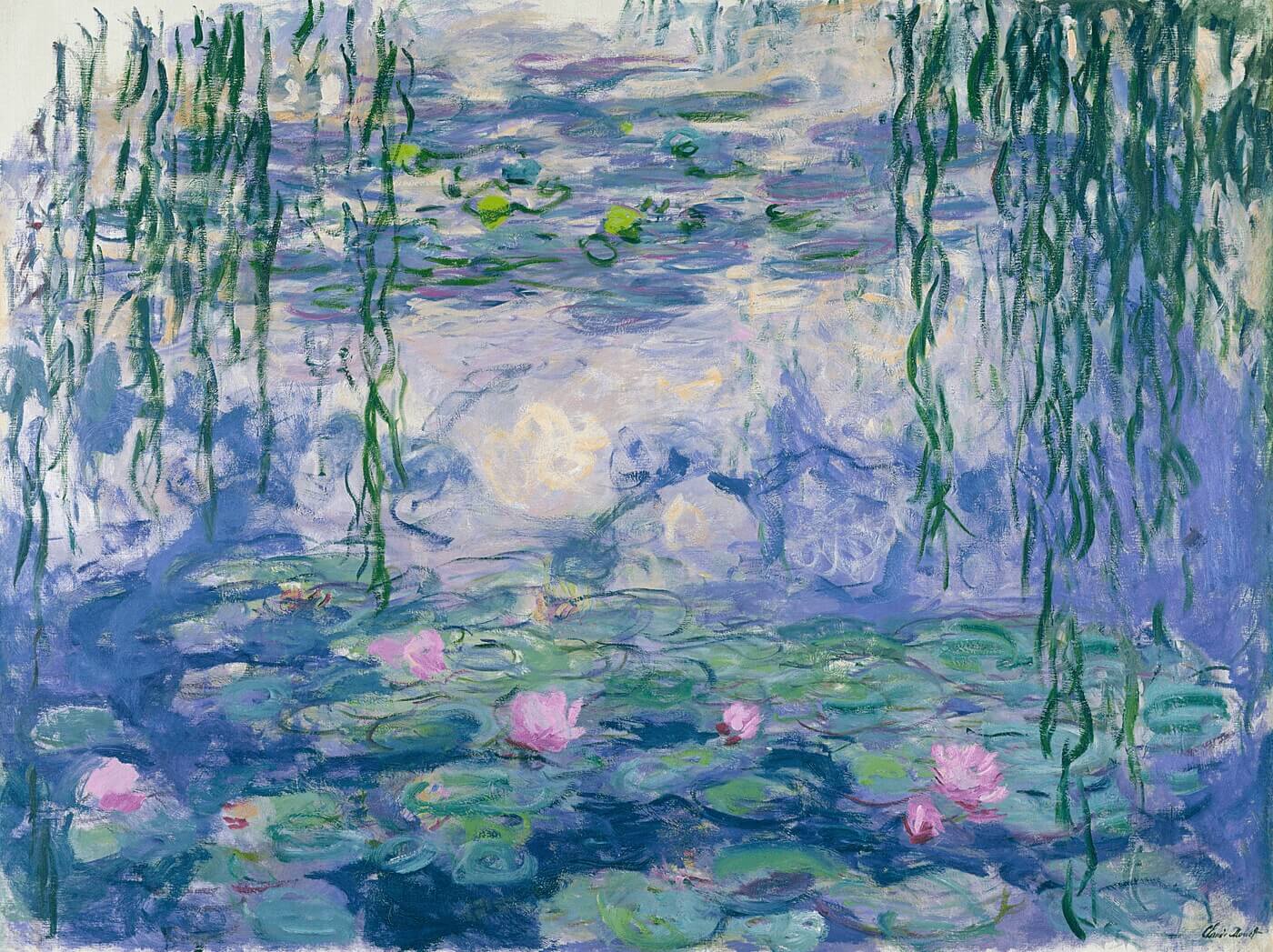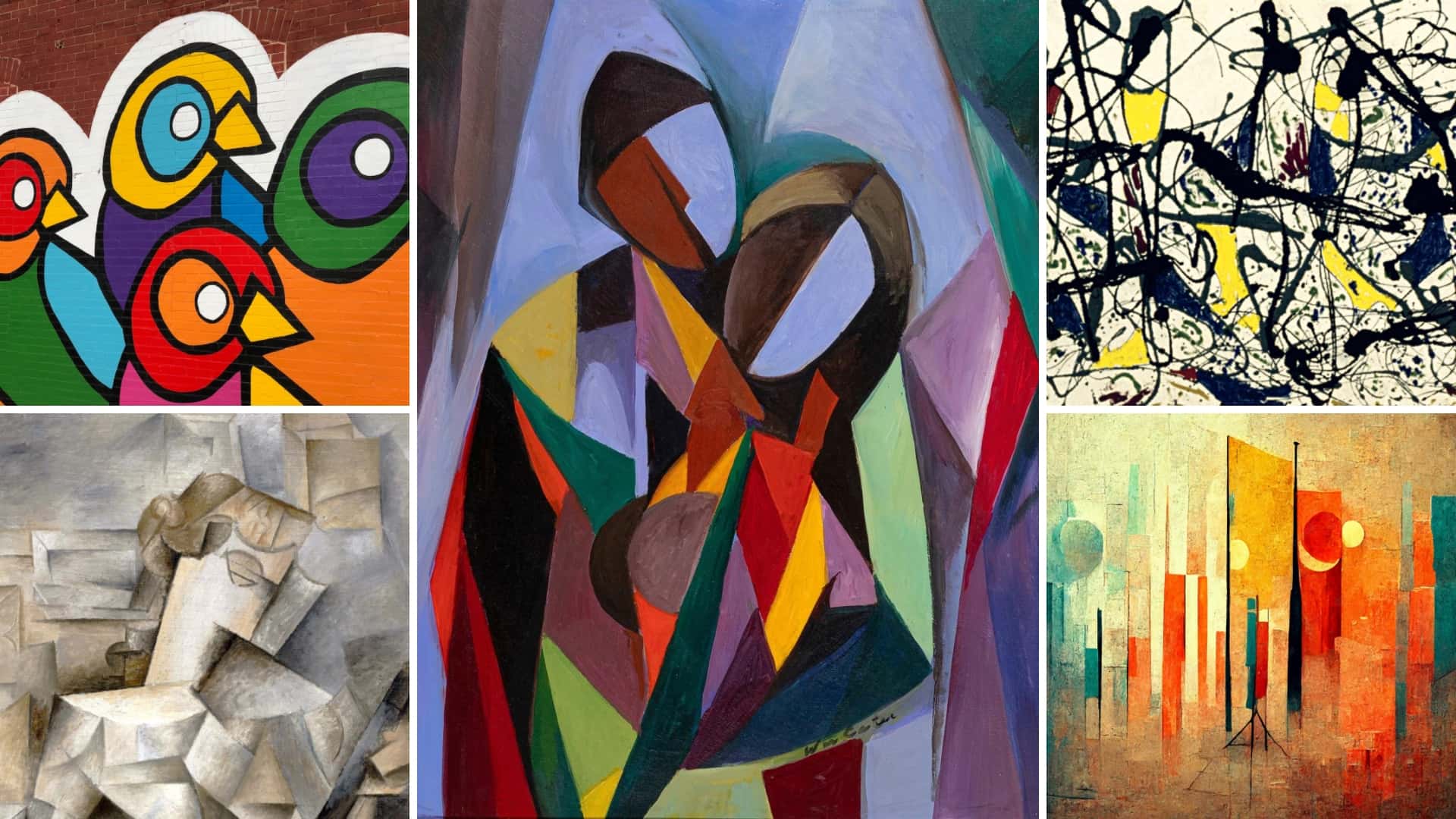Do you ever look at a painting in a modern art museum and wonder “what am I looking at?” We’ve all experienced that moment when we want to know more about the unusual artwork we’re seeing. Modern artwork is mysterious and thought-provoking, making it an exciting form of expression for artists around the world. But what is modern art exactly, where did it come from, and why do so many people love it? In this blog post, we’ll explore these questions to help you understand the nature of modern art better.
What is Modern Art Movement?
First, let’s define Modern Art
The concept of modern art can seem elusive at first. Before we dive into its history and important artists, let’s look at the modern art meaning.
MODERN ART DEFINITION
What is Modern Art?
Modern art is an art movement that emerged in the late 19th and early 20th centuries. It was characterized by a shift away from traditional styles to a more abstract, experimental approach to creating works of art. Major modern art movements include Impressionism, Expressionism, Cubism, Fauvism, Dadaism and Surrealism. Influential modernist artists include Pablo Picasso, Wassily Kandinsky, Salvador Dalí and Marcel Duchamp. Modern artwork has had a lasting impact on the development of visual culture and continues to influence contemporary art today.
Characteristics of Modern Art:
- Use of vibrant colors and bold brushstrokes
- Abstract, expressive forms and shapes
- Exploration of new concepts such as movement, time, and space
- Rejection of mainstream values and traditional techniques
This article is part of our ongoing series on Art Styles. You can also refer to our Art History Timeline post to help place this movement in context.
What is Modern Art Influenced By?
History of Modern Art
Now that we’ve covered the modern art definition it’s important to clarify that the history of modern artwork is a complex and ever-evolving narrative. It began in the late 19th century as a revolt against academic artistic conventions, which championed realism and classicism.
Led by pioneering artists such as Claude Monet, Paul Cezanne, Vincent van Gogh, and Henri Matisse, and Pablo Picasso. This movement sought to eliminate traditional rules around painting in favor of more experimental approaches to art-making.
What is modern art and where did it begin? For some great insight on how art evolved into modern art and how and why artists began pushing the limits of the form, check out this video by Nerdwriter1.
How Art Arrived At Jackson Pollock
To reiterate the video above, artists like Monet and Van Gogh influenced the push toward abstraction and away from realism. These works led to an influx of abstract styles such as Cubism, Fauvism, and Surrealism which had lasting effects on visual culture.
For example, Cubism was one of the first modern art movements, emerging in the early 20th century. It was a radical departure from traditional painting techniques, with its emphasis on abstract compositions and geometric forms.

Les Femmes d'Alger (Version "O"), 1955 by Pablo Picasso
Modern artists such as Pablo Picasso and Georges Braque painted with this technique, seeking to blur distinctions between objects and represent them in a new way, challenging conventional understanding of visual representation. This desire was at the core of modern art.
Today modern art continues to influence contemporary art across all mediums from painting, sculpture and installation through to digital media and performance art.
While each movement has its own distinguishing characteristics and qualities, there is a thread that flows through each modern art movement. Its practitioners sought to push the boundaries of traditional art-making techniques and explore new ways of expressing feelings and ideas through visual media. Let’s take a deeper dive into some of the most important modern art movements in art history and some examples of modern art from each.
Related Posts
Types of Modern Art
Impressionism
Impressionism was an art movement that began in France in the late 19th century. It is characterized by its focus on capturing the effects of light and atmosphere, and emphasizes accurate depictions of specific times of day and season. Artists employed brilliant colours, thick brush strokes, high chroma, and vivid light-dark contrasts to create their works.

Water lilies (1916-1919) by Claude Monet • Examples of modern art
Impressionists reacted against traditional academic painting styles and sought to capture fleeting moments or impressions of reality. Famous impressionists such as Claude Monet, Pierre-Auguste Renoir, and Alfred Sisley are renowned for their unique vision and approach to painting.
Modern Art Movements
Cubism
Cubism is an avant-garde art movement that emerged in the early twentieth century. Pioneered by Pablo Picasso and Georges Braque, it sought to challenge traditional notions of perspective and representation by abstracting forms and reducing them to their most basic shapes.

"La Roche-Guyon" (1909) by Georges Braque
Cubism broke down objects into interlocking planes, creating a fragmented view of reality that challenged viewers to see things differently. Today, cubist works continue to inspire creators to experiment with visual expression in unorthodox ways.
Types of Modern Art Movements
Fauvism
Fauvism is a style of painting that emerged in early twentieth century France. Characterized by bright, expressive colours and simplified forms, it was pioneered by Henri Matisse and André Derain.

André Derain's 'The Turning Road, L'Estaque (1906)
Fauvist works often use shock and contrast to capture the emotional intensity of a subject, emphasizing vivid hues over realism. By focusing on intense colour combinations, Fauve artists conveyed their own unique perspectives on the world around them.
Related Posts
Modern Art History
Surrealism
Surrealism is an art movement that emerged in the early twentieth century, characterized by dreamlike imagery and fantastical scenes. It was pioneered by artists such as Salvador Dalí, Max Ernst and Joan Miró, and draws heavily on Freudian psychoanalytic theory.

Roots (1943) by Frida Kahlo • Examples of modern art
By combining subject matter from everyday life with elements of fantasy, surrealist works create a unique visual space where the subconscious comes to life. Surrealism continues to inspire creators to explore the depths of their imagination and represent them through conscious expression.
Related Posts
Types of Modern Art movements
Abstract Expressionism
Abstract Expressionism is a style of painting that emerged in post-World War II America. Pioneered by artists such as Jackson Pollock, Mark Rothko and Willem de Kooning, this movement emphasized the artist's emotional and psychological state over representational representation.

No. 14, 1960 by Mark Rothko
By combining colour, line and form, Abstract Expressionist works explore the depths of human experience through abstract aesthetic techniques. Through its dynamic brushstrokes and symbolic forms, Abstract Expressionism strives to capture the innermost emotions of the painter.
What is Modern Art Pop Art?
Pop Art
Pop Art is a visual art movement that originated in the 1950s and gained massive popularity during the 1960s. It combines elements of popular culture, such as advertisements, comic books, and everyday objects, with abstract art techniques to create a unique aesthetic.
Pop Art celebrates kitsch and popular culture, challenging traditional artistic conventions and subverting hierarchies of taste. Artists such as Andy Warhol and Roy Lichtenstein are considered to be primary figures of the movement who pushed it from an underground phenomenon to a global one.

Tree of Life (1985) by Keith Haring
While modern artwork may have its roots in traditional artistic conventions, it often seeks to expand our understanding of what art is and can be – from exploring the intangible depths of our unconscious minds to celebrating popular culture or challenging existing social norms.
Modern art continues to be a major influence on contemporary art, in both its formal and conceptual approaches. These artists pushed boundaries of what could be considered "art" while challenging viewers to look at the world differently.
UP NEXT
Explore More Styles and Movements
This was just one of many fascinating segments of art history. There are many eras, styles, artists, and movements to discover. Let's continue our study by choosing the next stop on your way to becoming an art aficionado. Below you can visit our Art Styles Index, our Art History Timeline, or choose an individual movement.
Showcase your vision with elegant shot lists and storyboards.
Create robust and customizable shot lists. Upload images to make storyboards and slideshows.
